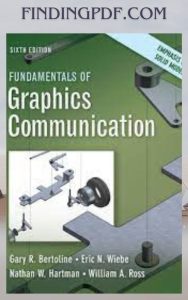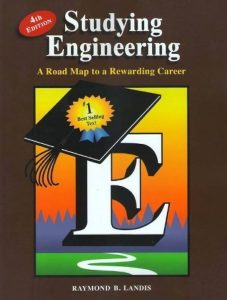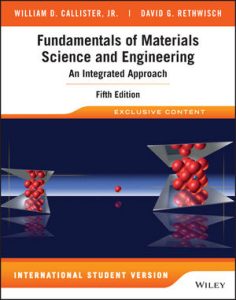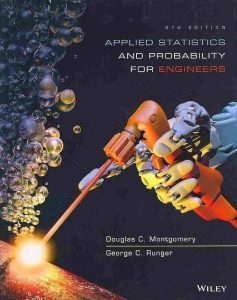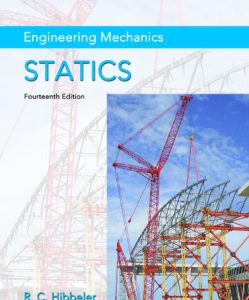
“Vector Mechanics for Engineers Dynamics 11th edition” PDF Free Download
Books Title: “Vector Mechanics for Engineers Dynamics 11th edition” PDF Free Download

“Vector Mechanics for Engineers Dynamics 11th edition” is an interesting book that is revolved around the basic ideas and principles about statics and dynamics. This book was originally published in 1992 by “McGraw-Hill Education”. By genre it belongs to the category of engineering text book. It has total 10 pages.
Books Authors: Ferdinand P. Bee, E. Russell Johnston, Jr, David E. Mazurek and Phillip J. Cornwell.
Ferdinand P. Bee

“Ferdinand P. Bee” was a French Mechanical engineer and professor. He was born in August 8, 1915, Binic, Binic-Étables-sur-Mer, France. He was died in April 30, 2003.
E. Russell Johnston

E. Russell Johnston was born in January 1, 1925, Philadelphia, Pennsylvania, United States. He was died in 2010.
David E Mazurek

“David E” was is an American writer and producer. He was born in April 4, 1956 in Waterville, Maine, United States. He attained Princeton University for higher education.
Phillip J. Cornwell

Phillip J. Cornwell is an American prominent professor. His famous books are “Fluid Mechanics”, “Thermodynamics: An Engineering Approach with Student Resources DVD” and “Design of Machinery”.
Introduction of “Vector Mechanics for Engineers Dynamics 11th edition”
“Vector Mechanics for Engineers Dynamics 11th edition” is written by Ferdinand P. Bee, E. Russell Johnston, Jr, David E. Mazurek and Phillip J. Cornwell. It explains and elaborate the whole basic ideas and important principles of static and dynamics. It defines the various terms and conditions that how to solve the tricky problems in an easy way along with it also defines step by step problem solving art. The whole features including plot, tone, pace, storylines and opening and closing points of this book are placed in an accurate and precise manner. Its core ideas and information’s are conveyed in a simple but detailed ways that can catch a sizeable readers worldwide.
Summary
“Vector Mechanics for Engineers Dynamics 11th edition” is a comprehensive and detailed book that teaches the fundamental principles and basic ideas of static and dynamics. This book is known for its broad explanation of problem solving, meaningful practices and extensive exercises that help students to develop a deep understanding.
The initial part of this book circles around thing that do not move. This part of the book deals with the analysis of force and how it effect on rigid bodies when all things are balance and not moving. It includes and explains the fundamental ideas of force, victors and moments. Then it elaborates equality system of force, how and why rigid things stay balance, center of gravity and how to analyze the structures. In this section, it also includes many of pictures that are called free body diagrams for the sake of solving various problems.
The second portion of this book revolved around the dynamics. This part explains how tiny particles and solid bodies move under the action of forces. It elaborates that tiny particles move in various direction as one, two and three dimensions. The Newton’s Laws of Motion are also explained and uses them to observe and solve problems about how the particles move. It extends the concept of how things move on a flat surface and how various particles are move on the three dimensional direction.
Key Features of “Vector Mechanics for Engineers Dynamics 11th edition”
Complete and broad coverage
This book covers and elaborate the whole features of statics and dynamic principles.
Introduce techniques for scientific problem solving
This book stresses an organized and systemically approach to elaborate the various sort of genuine problems about machines.
Practice Sets
It focuses on a lot of several practice sessions that can enhance ones skills in problem solving process.
Practical Explanation
This book includes many of images, diagrams and drawings to explain the fundamental principles and methods.
Usage of Free Body Diagrams
The free body diagrams are used for the sake of analyzing forces and their possible effects.
Implementation of Engineering Problems
It provides a numerous examples regarding how mechanical principles are applied in the real world of engineering science.
Writing Style
Ferdinand P. Bee, E. Russell Johnston, Jr, David E. Mazurek and Phillip J. Cornwell ways of writing in their book “Vector Mechanics for Engineers Dynamics 11th edition” is straightforward and easy to access and understand. They defines all in-depth themes such as effective pedagogy, comprehensive coverage, pictorial representation, engineering applications and problem solving methods in a simple but very detailed way.
They prefers to use simple and concise sentences to balance the pace of story. They avoids to use complex vocabularies and extra jargons with the rest of the story with the aim to convey their core ideas in an easy manner. They placed plot, tone, storylines and opening and closing points in a professional way that can attract a huge numbers of readers with the rest of the entire world.
Although, the writing style of Ferdinand P. Bee, E. Russell Johnston, Jr, David E. Mazurek and Phillip J. Cornwell is easy to approach and understand. They encourage the audiences to think critically and allow them to draw their own views about the future of this book. Furthermore, they also includes various real examples and concepts that can assist the readres in both of their practical and professional lives.
Major Receptions
“Vector Mechanics for Engineers Dynamics 11th edition” had received mostly positive reviews from students, engineers and other professionals. This book has praised for its numerous learning tools and resources, visual explanation of methods and problem solving, strong grief in mathematics and engineering practices. Many of the readers gave an important significance to this text book just because of its clarity, engaging writing style and broad explanations of various mechanical principles.
However, several educational institutions including universities had adopted this book worldwide. It has been translated into 12 different languages worldwide including French, Chines and German and it also has been sold 1.5 million copies worldwide since its publications. It has been recieved 4.5 stars out of 5 from Amazon and Goodreads,
Conclusion of “Vector Mechanics for Engineers Dynamics 11th edition”
“Vector Mechanics for Engineers Dynamics 11th edition” is an interesting and educational book that includes many of numerous lesions and teachings regarding engineering. Many of the educational institutions with the rest of entire world appreciate to read this book because of its clarity, broad explanation of methods and coverage of whole things that you want to know. This book also provides a basic information about machines and advance technology in the field engineering world.
The authors of this book shows how to solve problems step by step along with they gave various of fruitful real examples that help you in solving several mechanical problems. The whole features of this book are elaborated and explained by the authors in a professional way that can attract a huge numbers of reader worldwide. This book is suitable for mature and engineering students. I highly recommended this book to all of them who love to read engineering text books.
FAQs
Q: What are the two branches of dynamics?
kinematics and kinetics.
Q: What is the difference between static and dynamic in engineering mechanics?
Dynamics is the branch of mechanics that deals with the analysis of physical bodies in motion, and statics deals with objects at rest or moving with constant velocity.
Q: What are dynamics in engineering mechanics?
Dynamics is the study of how moving objects behave.
Q: What are the 3 laws of statics?
An object in motion will remain in that motion unless acted upon by an unbalance outside force.
Q: What is the first principle of dynamic?
Powerful tools to follow the real-time dynamics of a broad variety of systems in their ground as well as electronically excited states.
Q: What are the 5 concepts of dynamics?
1) Newton’s Second Law, 2) Principle of Work and Energy, 3) Conservation of Energy, 4) Principle of Linear Impulse of Momentum, and 5) Conservation of Linear Momentum.
Q: What are the basic concepts of dynamics?
Space (relative position or displacement), time, mass, and force.
Q: What are examples of dynamics?
A car moving despite the forces of multiple objects trying to stop it.
Q: What comes first statics or dynamics?
Statics and then “Dynamics
Q: What are the 4 types of equilibrium?
Stable, Unstable, and Neutral.
 Similar eBooks
Similar eBooks
